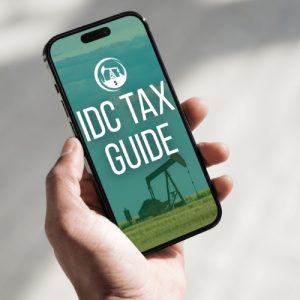FUEL YOUR PORTFOLIO
Exclusive Oil and Gas Investment Opportunities For Accredited Investors
WHY INVEST IN OIL AND GAS
Passive Income
Many oil and gas companies pay substantial dividends and royalties from production to shareholders, providing a regular stream of passive income.
High ROI
When an oil or gas well proves successful, it can generate substantial returns on investment (ROI). The potential for high profits is a major draw for investors.
Tax Deductible
The costs associated with exploring for and developing oil and gas wells can often be deducted in the year they are incurred.
Portfolio Diversification
Adding oil and gas investments to a diversified portfolio can help reduce overall risk. This is because the performance of oil and gas often tends to move independently of other asset classes.
Long-Term Revenue Streams
Successful wells can provide consistent revenue streams for many years, depending on the size of the reserve and the prevailing market prices.
INVEST WITH CONFIDENCE
Our team is here to empower you throughout the entire process. With a proven track record and unwavering commitment to transparency. We connect you with oil & gas operators/producers for investing and to take advantage of oil and gas tax deductions. Let us guide you to success – kickstart and fuel your oil and gas investments today!
Let us introduce you to an oil and gas company that has been featured in:

WHAT OUR CLIENTS THINK
A very different oil and gas investment firm than any other in the country, with their multiple exit strategies and scalability with their projects.

I took my time with this company and did my due diligence- the tax savings, monthly income (takes a year to spool up since they are building wells) and profit on exit (3-5 year target range) made this attractive for me.

Great company to work with. From owner to engineer, this company is well run.

GET STARTED TODAY
Contact our investment team to learn more.
Oil And Gas Tax Advantages
TAX BENEFITS
Depletion Allowance
After a well begins production, the Working Interest Owners can utilize a depletion deduction to shelter 15% of the gross income from the sale of oil and gas. This tax deduction allows investors to recover a portion of the cost of extracting natural resources, such as oil and gas, over time.
Intangible Drilling Costs (IDCs):
IDCs encompass expenses for labor, fuel, chemicals, hauling, and other related activities. Generally, IDCs make up the majority of the well's cost, ranging from 70% to 85% and are fully deductible against taxable income in the initial year.
Tangible Drilling Costs (TDCs)
TDCs refer to physical oil and gas drilling equipment like casing, pump jacks, and wellheads. Investors can benefit from a 100% tax deduction on TDCs spread over a seven-year period.
CALCULATE YOUR POTENTIAL TAX BENEFIT
Use our interactive tax deduction calculator To See how to significantly reduce your taxable income with 100% tax-deductible drilling costs.
Important to portfolio growth in the oil and gas sector is identifying projects with substantial upside potential, comparable to value-add projects in real estate. Investors can expedite the growth of their portfolios by constantly drilling new wells and increasing the overall value of the portfolio, essential strategies in this dynamic landscape.
Jay R. Young, CEO & Founder

New To Oil and Gas Investing?
Get Our FREE Intangible Drilling Costs Tax Guide.
Frequently Asked Questions
An IDC, or Intangible Drilling Cost, refers to the expenses incurred in drilling an oil or gas well that don't result in tangible assets. These costs typically include labor, fuel, and drilling mud.
You can invest in oil and IDCs through partnerships or direct investments. Your choice will depend on whether you're primarily interested in generating cash flow or maximizing tax benefits. Each investment style offers unique advantages to match your financial goals.
We'll help you start your journey with confidence. We prioritize transparency throughout the process. Our platform connects you with available direct investment in the oil and gas sector.
Working interest is for those who are interested in the tax benefits, whereas royalty interest is designed for those who want to minimize risk while still generating cash flow.
An SEC-defined accredited investor is an individual with over $1 million in net worth (excluding their primary residence) or an individual income of over $200,000 ($300,000 for joint income) for the past two years and likely in the current year, or an entity with over $5 million in investments, or someone with certain professional financial credentials like a Series 7 license. This status is important because it allows companies to offer unregistered, more complex, and potentially illiquid securities to these investors under specific exemptions from SEC registration rules.
The Exit will happen when we increase the value of all assets in the fund to a value that makes the most economic sense. The specific strategy for each fund varies but may include selling off a single asset if the value is increased to forecasted value.
With any investment, there are always risks and it's important to understand them.
Risks Involved in Oil and Gas Investments:
Price Volatility: Oil and gas prices are highly volatile and influenced by various factors, including geopolitical events, natural disasters, and shifts in supply and demand. This volatility can affect the profitability of investments.
Exploration Risk: Investments in exploration and production activities carry the risk that drilling may not yield commercially viable quantities of oil or gas. Not all wells drilled are productive, and some may result in a total loss of investment.
Regulatory and Environmental Risks: Oil and gas operations are subject to extensive regulations concerning safety, environmental protection, and land use. Regulatory changes or non-compliance can lead to fines, operational halts, or additional costs, impacting investment returns.
Operational Risks: Technical difficulties, equipment failures, and natural disasters like hurricanes or earthquakes can disrupt operations, leading to cost overruns or production delays.
Market and Economic Risks: Fluctuations in global economic conditions, interest rates, and investor sentiment can impact the oil and gas market’s performance. Additionally, ongoing advances in technology could affect long-term demand for oil and gas.
Liquidity Risk: Direct investments in oil and gas projects, such as mineral rights or private drilling programs, can be illiquid. Finding buyers willing to purchase these investments can be challenging, particularly during periods of market downturn.
